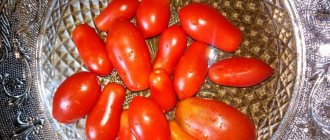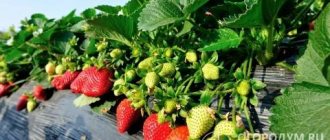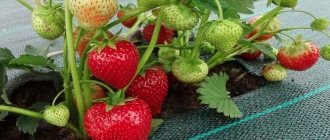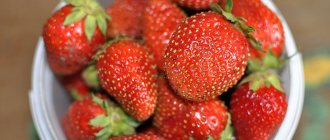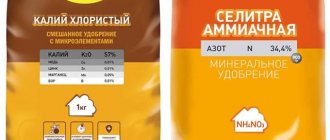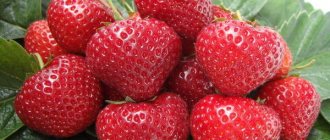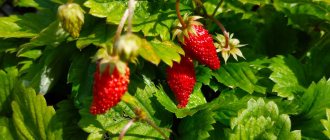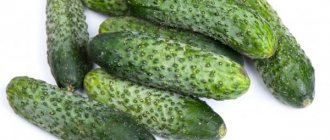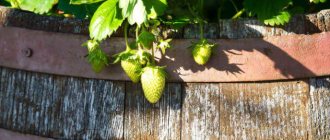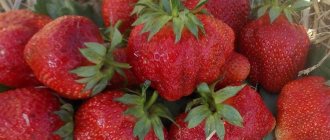Main characteristics of the Furor variety
Strawberry Furor stands out from the many Dutch daylight-neutral varieties due to its increased productivity, remarkable appearance of the fruit, wonderful strawberry taste and large fruit.
The variety is remontant, that is, it bears fruit several times a year, from early spring to late autumn. Suitable for both private and industrial cultivation. For commercial purposes, “Furor” is simply a godsend, because it tolerates transportation well and is perfectly stored.
Strawberries are successfully used for fresh consumption, as they have an unsurpassed taste. In addition, all kinds of preparations for the winter are prepared from it: preserves, jams, jellies. Strawberry Furor is an excellent product for freezing.
Distinctive features
The Furor strawberry bushes have a neat, compact appearance. The leaves are large, oval, with wide teeth, rich green. Peduncles are long, with countless ovaries. The flowers are snow-white, bisexual.
This strawberry produces little mustache, like many day-neutral varieties. To increase arborization, it is recommended to remove the peduncles of the first wave. The uniqueness of “Furor” is that new shoots of inflorescences grow very quickly.
The berries grow conical, elongated, standard shape. There are no giant fan-shaped fruits - all one-dimensional. The neck is small or absent altogether.
The color of the Furora fruit is bright red, with a lacquered sheen, and appetizing. The pulp is juicy, dense, sweet, with sourness. The weight of the fruits of the first harvest is on average 35-40 grams. Subsequent ones produce smaller fruits. The shape of the berries at the end of the season is no longer so elongated and takes on a more rounded appearance.
One of the main features of the “Furor” variety is that the fruits do not lose their unique taste even during rainy periods, and by the end of the season they remain just as sweet, which is not typical for remontant strawberries. Moreover, strawberries retain this feature even in unfavorable climatic conditions in open ground.
Characteristics of the berry
- The berries have the shape of an elongated cone and weigh 30-50g .
- At the beginning of fruiting they are approximately the same size and regular shape.
- By autumn they become slightly smaller and may become distorted.
- The berries have a bright red color and a glossy shine. The neck is short.
- The pulp is red, dense, juicy.
- The skin is strong, with small seeds.
- The aroma is pronounced.
- The taste is rich, harmonious, without sourness, reminiscent of ripe strawberries.
- The sugar content is high.
Important! Strawberry Furor is recommended for gardeners who are disappointed in other remontant varieties. The berries of this variety do not have the characteristic crunchiness.
Advantages:
- the sugar content does not decrease during the season. The fruits continue to be sweet;
- do not darken or weather when stored in the refrigerator;
- retain taste and aroma for a long time;
- have a high rate of transportability.
Productivity
The Furor strawberry bears fruit very consistently and almost continuously. It begins in open ground in mid-May and ends at the end of October. A short two-week break is observed after the harvest of the first wave.
Ripening depends on the climate in which it is grown, but it should be noted that among all the remontant varieties, “Furor” is one of the earliest.
The originators of the variety reported an approximate yield - 1.8 kg of fruit can be harvested from a bush of this strawberry. This result can be achieved by using appropriate agricultural technology, and many summer residents confirm this.
Beginning amateur gardeners receive up to 1.4 kg of harvest from one plant for the whole year, and this is a very worthy achievement.
Description of the variety and photo
Furor is a day-neutral remontant variety. Fruits from May to November, until severe frosts. The highest yield is in the first cycle. Grown in open ground, greenhouses, tunnels.
This berry crop can be grown as a potted plant using hydroponic substrates. The variety can be cultivated all year round in a greenhouse or at home.
Main characteristics:
- The bush is compressed and compact, with a small number of leaves. The leaves are medium-sized, toothed, rich dark green in color. The flowers are white. The berries are large, bright red.
- Peduncles are long and multi-berry. They form in both intense heat and cool, rainy weather.
- The variety is characterized by high productivity. One bush produces 1.5 - 1.8 kg of berries per season, so Furor is promising for growing for commercial purposes.
- Tolerates winter cold and periods of drought well.
Landing
It is possible to plant plants of the “Furor” variety with a closed root system all year round, but with an open root system, it is advisable to plant seedlings at the end of summer. Such planting in the summer will allow the seedlings to get stronger and confidently bear fruit next year.
The place for planting strawberries should be located on a flat, slightly elevated area, sunny, with loose, non-acidic soil.
The bed is prepared 3-4 weeks before planting: weeds and roots are removed, organic and mineral fertilizers are applied, and they are dug up. For organic matter, a diluted mullein infusion (1:10) is suitable, for mineral additives – wood ash 91 cups per 1 sq. m. m).
Strawberries of this variety are planted according to the following scheme:
- between seedlings 25 cm;
- between rows 60 cm;
- maximum 4 rows per bed;
- staggered planting order.
Before planting strawberries, water is poured into each hole so that the soil does not pull the bush below the root collar. It is unacceptable to fill the center of the plant with soil, since that is where the growth point is located.
Watering and care
With good care, Furor strawberries bring huge returns. No labor-intensive activities are required. All you need is timely watering, loosening, weeding and fertilizing.
Regular watering has a significant impact on the yield of Furor. Drought is undesirable for this variety. It is watered at a slightly increased frequency than other types of strawberries. After planting in open ground, young bushes need to be watered every day for a week with warm water. Then the frequency of watering is reduced to 2 times a week. You can reduce the frequency of watering if you mulch the soil with straw, sawdust, and pine needles, which retain moisture in the soil.
After watering, the soil should be loosened. Loosening is necessary to saturate the root system with oxygen and remove the resulting earthen crust.
Removing weeds is an important step in caring for strawberries. Weeds interfere with normal plant growth and attract pests. Timely weeding helps active flowering and fruiting. To simplify weed control, many farmers use black agrofibre, covering the beds with it and making holes for each seedling.
Watering
Furor strawberries need to be watered a little more often than regular, non-remontant varieties. In open ground, after transplanting, the bushes are watered daily. After about a week, you need to do it less often and eventually bring it up to 3-4 times a month. In greenhouses and pots, houses are watered as needed as the soil dries out.
Watering rules:
- Only warm water is used;
- done in the morning or evening, when the heat subsides;
- the soil must be moistened at least 3 cm;
- the next day, the soil must be carefully loosened to ensure air access to the roots.
Important! The frequency of watering will help reduce mulching with sawdust, pine needles, straw and mown grass. In this case, the soil will not need to be loosened, and the berries will not be splashed with mud after rain.
Top dressing
Remontant strawberries of the Furor variety require frequent feeding. Continuous supplementation is beneficial for:
- improving fruit quality;
- accelerating growth;
- ensuring preparation for wintering;
- increasing the speed of berry ripening;
- reducing the risk of disease;
- rescue from pests;
- obtaining a normal harvest.
Organic matter is applied three times a season: first in the spring, then after the first harvest, and the last time at the end of summer. Diluted infusions of chicken manure or mullein are suitable.
Enrichment with useful substances and microelements, as well as raising and strengthening the immunity of plantings is done by feeding with water infusions of herbs: nettle or wormwood. Fill 2/3 of the bucket with herbal mass, add water and leave for 3 days. Then pour 0.5 liters under each strawberry bush. solution diluted 5 times.
For nutrition, they also resort to using ready-made mixtures of complex fertilizers, which can be purchased at a specialized store. In total, about 8 feedings are necessary during the growth and fruiting stage.
Protection against diseases
The presented garden crop variety is resistant to all types of fungal diseases. However, despite the resistance of the “Furor” strawberry variety to diseases, it is still worth taking preventive measures. Use Bordeaux mixture (1%) or another preparation containing copper.
Spraying with a protective agent is carried out in the spring, before the start of the season and in late autumn. After the strawberries have finished blooming until the end of the season, there is no need to take preventive action.
Ready-made fungicidal preparations will be effective in the spring: Horus or Switch. And for autumn treatment they use Ridomil Gold, which will be useful for strawberry leaves before wintering.
Description of culture
Strawberry "Furor" is formed in the form of a compact compressed bush. A small number of leaves develop on it. The plates are three-lobed, wrinkled and widely spaced. The leaves are distinguished by their rich and dark green color. They are quite large, and their edges are complemented by large teeth.
The strawberry variety "Furor" has many berries and long flower stalks. Even in the middle of summer, in the heat of the day, they continue to form.
Gardeners highly value this crop for other reasons. They really like the fruits of the plant themselves. Strawberry "Furor" is characterized by:
- One-dimensionality (the first berries of this variety are not comb-shaped or gigantic).
- Regular, elongated conical shape.
- Weighing between 30-35 g.
- The presence of a small neck.
Strawberries are resistant to diseases and pests.
It is also worth noting that the berries become somewhat smaller in the fall, but not significantly. Slightly curved or rounded fruits may also periodically form. However, their percentage of the total mass is negligible. Some berries may lack a neck. At the moment of technical ripeness, a seedless strip is sometimes formed near the sepals. It usually becomes colored when fully ripe.
Preparing for winter
Strawberry varieties bred in Holland are not winter hardy. But strawberries Furor are an exception to this rule. In regions with warm winters, this variety is not covered at all for the winter. In northern regions, where fairly low temperatures are observed, strawberries need shelter.
To protect against frost, many farmers resort to using a wonderful modern covering material - spunbond, which will reliably preserve strawberries in the winter.
Plastic film cannot be used, as it does not allow air to pass through well, thereby provoking the development of diseases.
Characteristic
Strawberries of the “Furor” variety are popular among both experienced gardeners and beginners. It is worth taking a closer look at the description of this variety. Its fruits have a very attractive appearance, and the yield is quite high. In addition, this strawberry is unpretentious in care and perfectly resists diseases and pests. Root rot, powdery mildew and other fungal diseases will not take it.
This variety appeared in Holland quite recently - it has been sold since 2014. It has already become widespread in Poland, Great Britain, and, of course, in Holland itself. In EU countries it is also very popular and is sold everywhere.
In regions with warm climates, the fruiting season increases significantly.
The “Furor” variety is classified as a neutral daytime remontant species. It has the highest characteristics, including due to the fact that the harvest is harvested from April to December (for the northern regions from May to October).
A notable feature of this variety is that the fruits become ripe very quickly. The fruits ripen in peculiar waves, which makes it possible to grow the berries for commercial purposes, given the high yield of the variety. In addition, the crop can have year-round circulation. Strawberry “Furor” belongs to the Flevo Berry line from Flevoplant BV
This berry can be grown in tunnels, open ground and greenhouses. Interestingly, the plant can be grown in a pot using hydroponics.
The bush of the “Furor” variety is quite compact, but with an abundance of leaves on it, the plates of which are far apart and three-lobed in structure. The leaves are noticeably wrinkled, with large teeth along the edges, and have a rich green color. Peduncles with many berries, long. They do not stop forming in any weather conditions. The berries of this variety themselves have such characteristic features as:
- uniformity in size - the berries at the beginning of fruiting do not change shape, so they will not become huge or comb-like;
- cone shape, slightly elongated, generally regular;
- berry weight - about 33 g;
- there is a small neck.
Reproduction
To propagate Furor strawberries, the simplest method is often used - with a mustache. You need to choose a strong, developed mustache in the second year of life. They are considered the most viable. “Furor” produces few whiskers, so all available shoots are taken. The released mustaches should be sprinkled with soil for better rooting, and then replanted separately.
When using the method of dividing a bush, you must carefully ensure that each part of the separated bush has a sufficient number of leaves and roots. Berries on seedlings propagated in this way appear within a year.
It is possible to propagate “Furor” by seeds, but this is a very lengthy and ineffective process that is rarely used. Sowing seeds for seedlings is carried out in a container with prepared moistened soil mixture, which is covered with film. After 30 days, after the appearance of small sprouts, the protective film is removed. The seedlings dive into small cups when they produce 2-3 leaves. Watering the seedlings is carried out from a spray bottle. It is unacceptable for drops to get on the sheets. Seedlings can be planted in open ground when 5-6 leaves appear.
Advantages and disadvantages
The garden culture of the described strawberry variety is characterized by a significant number of advantages.
- Long-term fruiting.
- Large fruit (average weight 35 g).
- Early ripening.
- Possibility of cultivation in closed ground.
- Regular, beautiful, elongated berry shape.
- Excellent yield with proper care.
- Remarkable heat resistance, berries are not subject to caking in the sun.
- Disease resistance.
- Sweet and sour, excellent taste.
- Dense, without crunch, fruit pulp.
- Excellent transportable properties.
- Long shelf life.
There are also several disadvantages to the Furor strawberry, but compared to the abundance of advantages, there are very few of them:
- on acidic soil, “Furor” grows poorly, not fully revealing its potential;
- an intensive variety that requires proper fertilizing and frequent watering;
- The berries of the latest wave grow a little smaller and have a different shape.
Taking into account how large a harvest this variety of strawberries produces, all comments about the shortcomings can be taken into account and corrected by properly caring for the berry crop.
